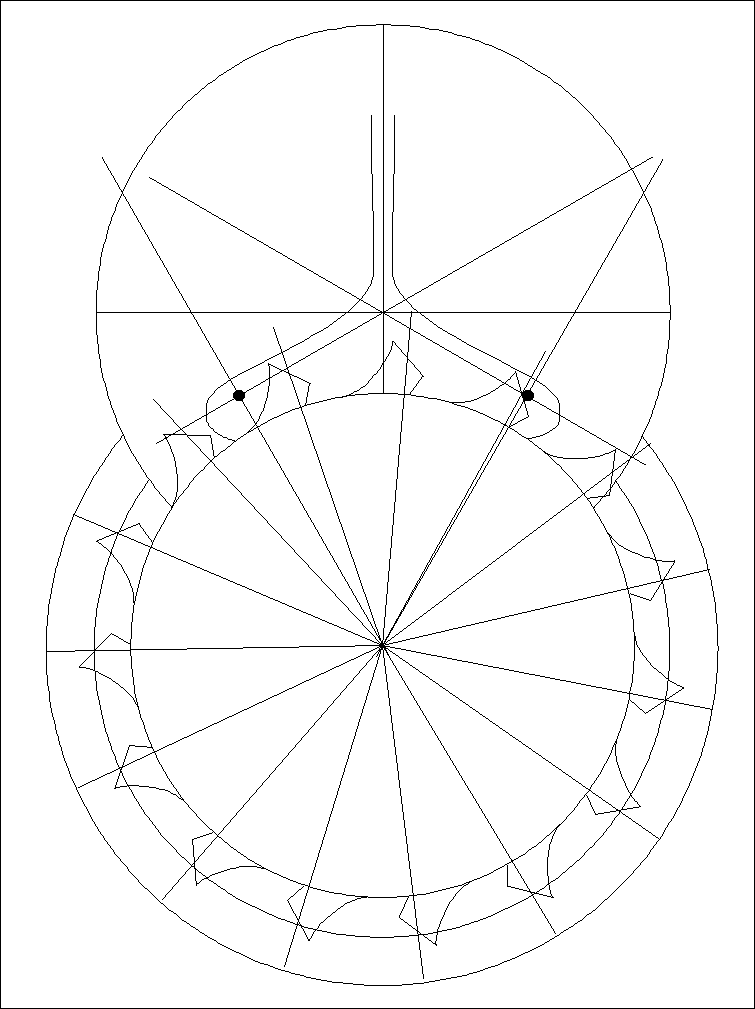17: The Pin-Pallet Escapement
You will recognize this drawing from chapter 9 of the Clock section. In order to
avoid repetition, I will discuss only how it differs from the modern Swiss Lever
Escapement.
In the club-tooth design, the escape circle radius of each tooth meets the impulse
face and the locking face at the entrance corner. In the pin-pallet wheel, however, the
escape circle radius of each tooth bisects the impulse face. The method used for the
pin-pallet wheel is the correct approach, and it must be used here. I used the other
method for the club-tooth escape wheel because it enabled me to place the entry pallet in
line with the tooth's impulse face at the mid-point of the impulse: in other words, to create a better-looking drawing. The tooth's impulse face was less important because the
relationship between the angles changed during impulse, (see chapter 3). In fact, the last
drawing of the Swiss Lever showed tooth and pallet impulse faces that were not parallel.
The important criteria in the Swiss Lever are the angles of the pallet's impulse and
locking faces, and that the pallet's impulse face always be bisected by the pallet circle's
radius line.
 |
In the pin-pallet escapement, the angle of impulse is determined by the tooth's impulse face rather than the pallet's impulse face, so the tooth's impulse face should always
be bisected by the escape radius line, and the angle between these two lines should always be 45º. The pallets are bisected by the pallet circle's radii. The pallets are also bisected by the escape circle's radii, in order to have equidistant impulse. The amount of
lock is determined by the radius of the pallet pin.
Both escapements were designed with the same number of escape wheel teeth and
with the same number of teeth between the pallets. Therefore, the other design principles
apply to both designs.
Go to Table of Contents
Go to Escapements